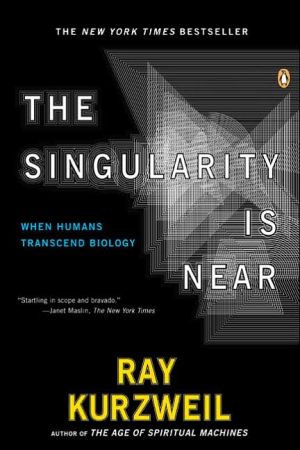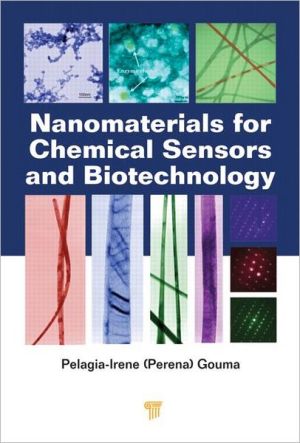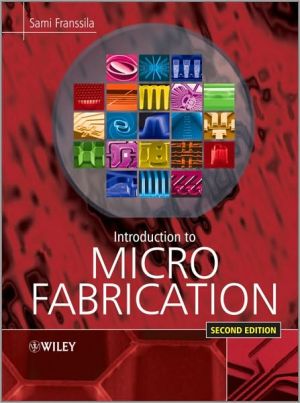Cellular Computing
The completion of the first draft of the human genome has led to an explosion of interest in genetics and molecular biology. The view of the genome as a network of interacting computational components is well-established, but researchers are now trying to reverse the analogy, by using living organisms to construct logic circuits. The potential applications for such technologies is huge, ranging from bio-sensors, through industrial applications to drug delivery and diagnostics. This book would...
Search in google:
The completion of the first draft of the human genome has led to an explosion of interest in genetics and molecular biology. The view of the genome as a network of interacting computational components is well-established, but researchers are now trying to reverse the analogy, by using living organisms to construct logic circuits. The potential applications for such technologies is huge, ranging from bio-sensors, through industrial applications to drug delivery and diagnostics. This book would be the first to deal with the implementation of this technology, describing several working experimental demonstrations using cells as components of logic circuits, building toward computers incorporating biological components in their functioning. Doody Review Services Reviewer:Bruce A. Fenderson, PhD(Thomas Jefferson University)Description:This book provides an introduction to the use of biological systems to process information and achieve engineering goals. Future applications in this field include the construction of molecular computing devices, nanoscale factories, and biosensor chips, as well as the development of improved methods for pharmaceutical synthesis and drug delivery. The 10 chapters cover topics ranging from enzyme genetic programming to the device science of whole cells.Purpose:The overall goal is to bring together both theoretical and experimental results to promote interest in the concept of "cellular computing." The authors hope to lay the foundation of a new engineering discipline that is distinct from biochemical and biophysical engineering. The contributions are up-to-date.Audience:This book is written for research scientists in chemistry, biochemistry, genetics, information science, and engineering. Graduate students and more senior investigators will read this book to broaden their perspectives and gain insights into the use of cells for molecular and cellular information processing. The authors are experts in this new field.Features:Both theory and experimental data on topics ranging from molecular to cellular are presented. The text is supplemented with line drawings and black-and-white photomicrographs. Each chapter includes a bibliography. The book is compact and readable.Assessment:This book is highly technical and assumes a high level of understanding by the reader. The use of jargon and terminology not commonly used in the biochemistry literature makes reading difficult for non-experts. The authors often delve into complicated research findings without laying a proper foundation. Some of the results are preliminary and speculative, and their significance appears to be overstated. The last chapter on computation in ciliates, although fascinating in terms of the underlying genetics, seems out of place. The wide range of topics presented will make this book an important contribution to literature at the interface of engineering and biology.
1An introduction to cellular computing32Proteins and information processing113Enzyme genetic programming194Genetic process engineering435The device science of whole cells as components in microscale and nanoscale systems746The Enterococcus faecalis information gate1097Cellular computation and communication using engineered genetic regulatory networks1208The biology of integration of cells into microscale and nanoscale systems1489Encrypted genes and their assembly in ciliates17110Biocomputation in ciliates202
\ Reviewer: Bruce A. Fenderson, PhD(Thomas Jefferson University)\ Description: This book provides an introduction to the use of biological systems to process information and achieve engineering goals. Future applications in this field include the construction of molecular computing devices, nanoscale factories, and biosensor chips, as well as the development of improved methods for pharmaceutical synthesis and drug delivery. The 10 chapters cover topics ranging from enzyme genetic programming to the device science of whole cells.\ Purpose: The overall goal is to bring together both theoretical and experimental results to promote interest in the concept of "cellular computing." The authors hope to lay the foundation of a new engineering discipline that is distinct from biochemical and biophysical engineering. The contributions are up-to-date.\ Audience: This book is written for research scientists in chemistry, biochemistry, genetics, information science, and engineering. Graduate students and more senior investigators will read this book to broaden their perspectives and gain insights into the use of cells for molecular and cellular information processing. The authors are experts in this new field.\ Features: Both theory and experimental data on topics ranging from molecular to cellular are presented. The text is supplemented with line drawings and black-and-white photomicrographs. Each chapter includes a bibliography. The book is compact and readable.\ Assessment: This book is highly technical and assumes a high level of understanding by the reader. The use of jargon and terminology not commonly used in the biochemistry literature makes reading difficult for non-experts. The authors often delve into complicated research findings without laying a proper foundation. Some of the results are preliminary and speculative, and their significance appears to be overstated. The last chapter on computation in ciliates, although fascinating in terms of the underlying genetics, seems out of place. The wide range of topics presented will make this book an important contribution to literature at the interface of engineering and biology.\ \ \ 2 Stars from Doody\ \








